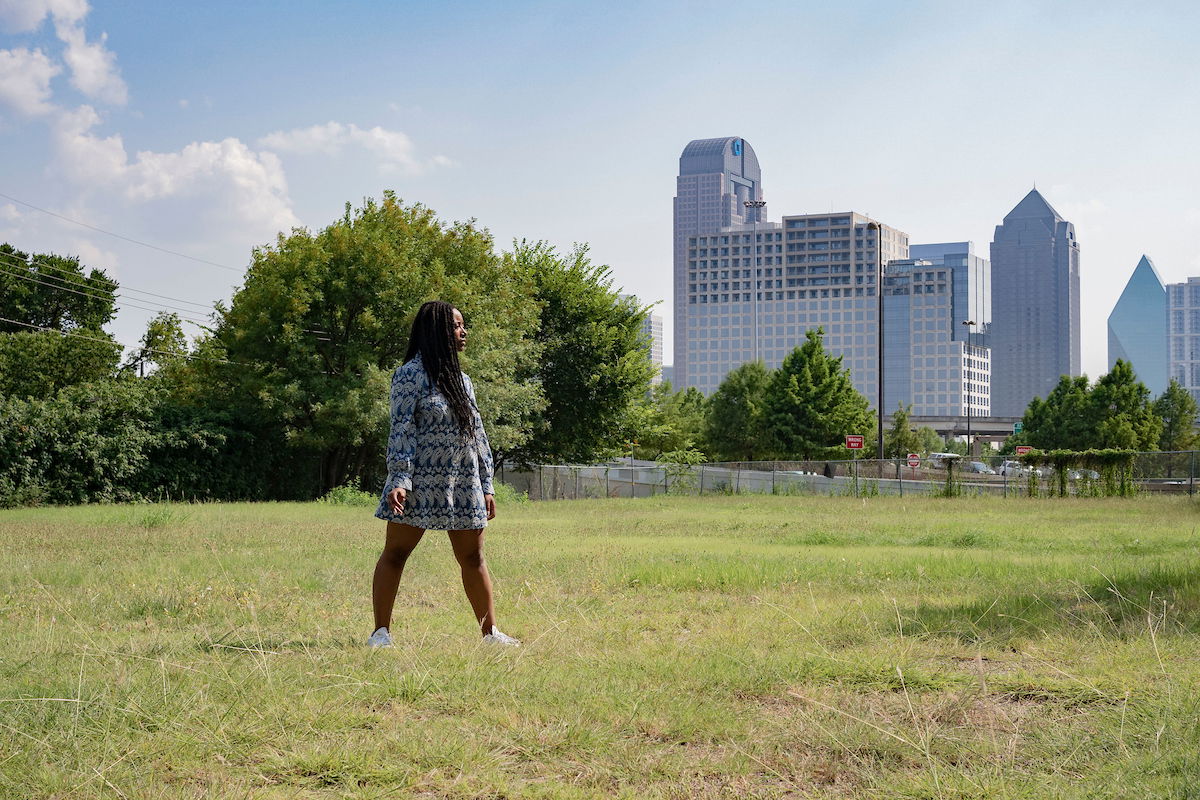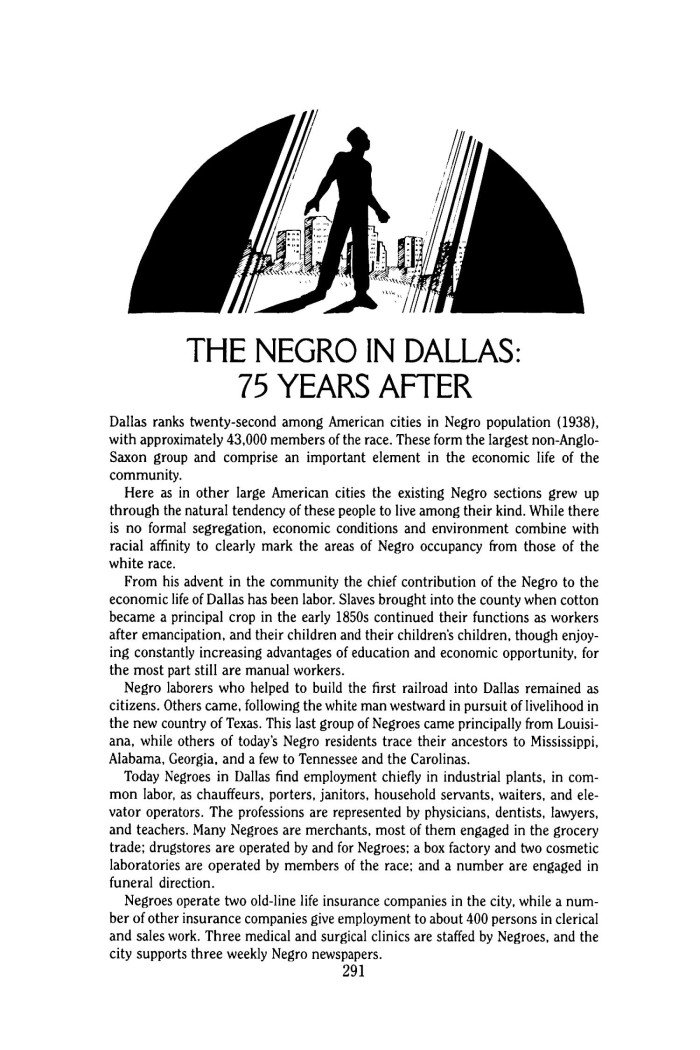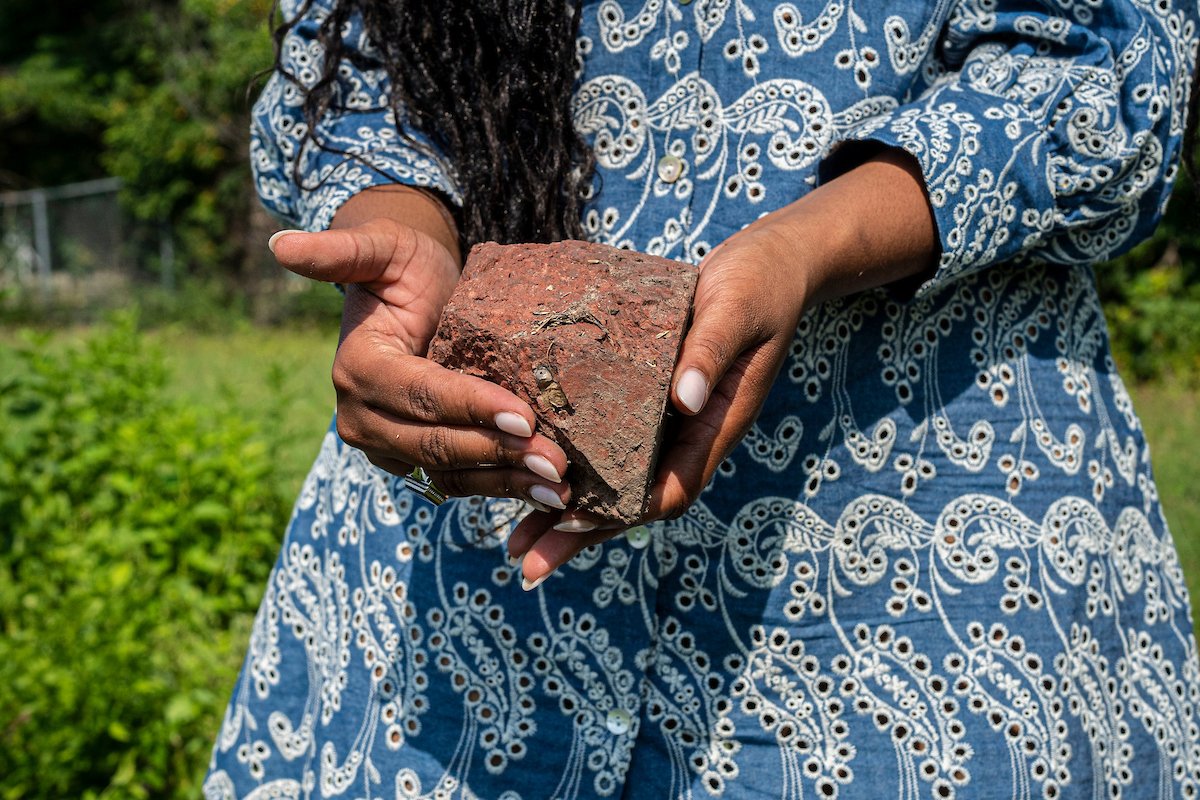“And this is where our church used to be, it was moved to build this,” my mom would say as she pointed to Cityplace on our drive to church when I was a child. “People lived there … and there, that house that used to be there is gone,” my mom recalled, resuming her tour post-worship by pointing to the few and ever-dwindling shotgun homes that dotted the land around Pilgrim Rest Missionary Baptist Church.
She reminded us that most of the Black people who lived there had to leave — and the community was “different.” As we approached the Central Expressway ramp, I would take one last look at the most notable landmark from the Black community — Freedman’s Cemetery, juxtaposed with the adjacent Neighborhood Walmart.
Similar to most of my fellow Millennials and even Gen Xers who grew up in Dallas, I did not know the full story of the Black community I had frequented growing up — how could I have when most of it had been destroyed?

After Dallas ISD closed several of our city’s schools in 2011, I became interested in the backstory of our city’s early Black schools. My research led me to a small children’s book from the archives of Marilyn Clark, the now retired but former education and outreach coordinator at the South Dallas Cultural Center. The book was titled, “The Freedman’s Memorial: A Memorial, a Legacy.”
Read more in “Dallas Forgot: Remembering and reclaiming the Black schools we’ve lost”
It opens with a dazzling, colorful picture map on the inside cover detailing the vibrant community that ran along the Central Railroad, before it was replaced by North Central Expressway. The map depicts a community so large it runs off the page. It is estimated Freedman’s Town covered nearly 276 acres of land located in what is now one of Dallas’ priciest neighborhoods, which is now predominantly white. Most people know it today as Uptown.
Seeing the historic Black community represented so fully on the pages of Ms. Clark’s children’s book makes it hard to believe that only a few historic structures remain, such as the storied Booker T. Washington High School, St. Paul’s United Methodist Church, the Pythian Temple and Moorland YMCA building, which became the Dallas Black Dance Theatre after the Moorland branch relocated to Oak Cliff.
I had been trying to locate the schools dismissively named “Colored Schools Nos. 1-9” by the city. But something on the map caught my eye that I had never seen or heard of: the B.F. Darrell School.
It was right there amid the community also known as Short North Dallas or State and Allen. This was a “self sufficient” Black community, home to the families of Dallas’ recently freed enslaved people. One of the first land parcels bought by these community members was for the cemetery in the 1860s. They worked diligently to build their lives and create a community they could be proud of, despite the cruel racism and discrimination that lurked around them. Dallas’ wealthy, white homeowners, who resided nearby on grand avenues such as Ross, forbade Black families from living too close yet wanted them close enough to continue their complete dependence on and exploitation of Black labor.
“Here as in other large American cities the Negro sections grew up through the natural tendency of these people to live among their kind,” penned a writer from the Federal Writers Project in the Works Progress Administration Dallas Guide and History. These writers were charged with “emphasizing the history, folklore, the speech and mores of the common people, and the contributions of ethnic groups to the nation,” according to the WPA Dallas introductory pages.

But the writer’s rhetoric proves false and reveals the blatant bias and racism of the times. Records indicate that as early as November 1865, the City of Dallas had enacted vagrancy laws that severely limited the movement of Black people throughout the city, similar to laws throughout the state. The creation of a Black community was as much a method of survival as it was convenient because of legal segregation, both written and unwritten in state and city charters. At the time the WPA guide was written in 1940, the city of Dallas had already, in 1916, “passed a law providing for segregation in residential areas, thereby setting off a chain of events which culminated in a state law giving cities the power to establish residential segregation ordinances.”
When I saw the B.F. Darrell School on the Freedman’s Town map, I knew it had to have been part of the lifeblood of this community, but I couldn’t place it in the Dallas I know today. I traced over the map with my fingers — where exactly had the school been located?
Had it been replaced by one of the many ubiquitous apartment complexes in and around Uptown? Was it somewhere beneath North Central Expressway?
The expressway, constructed in the 1940s, ripped apart Freedman’s Town, but the community’s dismantling actually began much earlier as the City of Dallas used imminent domain and labeled Black communities “blighted” and “eyesores” to demolish “mostly Negro” houses to make way for the highway. In the late 1980s, an expansion project for the expressway led to a startling discovery — the highway had been built atop the final resting place for hundreds of Black community members.
With the work of tireless community members such as Mamie McKnight, Julia Jordan and many others, the site was adorned with a historic marker as well as a memorial to those whose remains had been disturbed. Their work also resulted in the children’s book, intended to be circulated to Dallas ISD students to teach them the history of Dallas’ largest Freedman’s Town.
It’s not certain, however, that the book ever made it to Dallas ISD classrooms. In the attempts to never again forget, exactly that might have happened.
Today, little of Freedman’s Town that existed east of the railroad, remains. The businesses and sanatoriums (what we today call sanitariums) are gone. There is no trace of the homes of the children who would have faithfully attended the B.F. Darrell School, nor any indication that the school ever existed. Just as the cemetery was, the school has been obscured from Dallas’ history.
When I came across Dallas native and longtime resident Marzelle Cooper-Hill’s 1988 interview, it held a clue: “I attended school at the Dallas Colored School and the Dallas Colored High School at Hall and Cochran … At first there was the old red building and then they built another building.”
These words and insights from other former B.F. Darrell students’ oral histories, plus details collected from historical Sanborn fire insurance maps and old city directories, led me to an empty lot at Hall Street and Cochran. When I visited the site again, with eyes more ready to see, I found chunks of red brick, as described by Mrs. Cooper-Hill, and remnants of the school’s foundation.

I think it had been hard for many to fully understand Central Expressway’s impact on the community, but standing on the lot and facing Downtown, I could look past the highway and clearly see the entrance to Griggs Park, enjoyed by the Freedman’s Town families who had lived in nearby homes. The lot at Hall and Cochran was hemmed in, and not just by a chain-link fence. I felt the enormity of the Central Expressway but, more specifically, the enormity of the close-knit community that had been lost.
I had been trying to answer the questions, “What happened to B.F. Darrell School, and when did it disappear?”
The truth is, the school never disappeared fully, and it never can. The name was transferred to a new school that opened in Oak Cliff in 1971, which for a time housed the Barack Obama Male Leadership Academy and currently is the New Tech High School at B.F. Darrell. And I knew that the history must live on with community members who attended the school and carry its stories.
But despite my lifelong familiarity with this community, I had only ever come across the school as an illustration on a map in a children’s book that, as far as we know, was never published or distributed. This unsettling reality left me determined to stitch together the stories of not only the B.F. Darrell School but so many of our city’s early Black schools. We have remnants, but no cohesive quilt.
In my search to learn more, I spent time at the African American Museum with Dr. Marvin Dulaney and Dr. Harry Robinson before the pandemic erupted our normalcy and my archival digging. I called longtime Dallas educators Marian Williams and Shirley Ison-Newsome, who connected me to their educator friends. Jerry Hawkins of Dallas Truth Racial Healing and Reconciliation shared the children’s book on Freedman’s Town from Ms. Clark’s archives, and Kimberly Sims, my fellow Pilgrim Rest church member, provided insight into her own family history. I connected with members of the historically Black Delta Sigma Theta sorority’s Dallas Alumnae chapter, beaming with pride to share the story of Fredrica Chase Dodd. Mrs. Ella Johnson mailed me a copy of “Beauty and the Best,” a book the Dallas chapter published to tell Mrs. Dodd’s story and, by extension, the stories of many other great Dallas educators.
I spoke with many gracious community elders who shared wisdom and resources. They gave me their blessing and, in the words of Mrs. Johnson, urged me: “Keep going.”
If you or a family member attended B.F. Darrell or any of Dallas’ early Black schools, we want to hear from you and make your voices part of this project. Contact us at history@dallasfreepress.com.
This piece is part of a project to explore, chronicle and reclaim the history of Dallas’ Black schools. It’s reported through a partnership of Dallas Free Press and the Imagining Freedom Institute, with support from Press On’s Southern Movement Media Fund. For more information, email info@dallasfreepress.com or info@theifinstitute.com.

I am looking forward to reading about the former students’ stories.
Very interesting and well researched piece. Adds so much context to the backdrop of what happens in our city and communities everyday. Proud DISD graduate with very little knowledge of the history we live everyday. Thanks for your tireless efforts.
I couldn’t stop reading! It was like a good book you can’t put down. Thank you so much.
Thank you for this piece and for researching and writing about this history. I shared your piece and some parents noted that they would like to know more about the book by Marilyn Clark “The Freedman’s Memorial: A Memorial, a Legacy.” Is it digitized anywhere? Would Ms. Clark be interested in having it republished? Our children need to know this history – so important in writing a more just and informed future. Perhaps one of our local publishers could finally get it in to print, with the permission and involvement of the author or her heirs of course. I would be glad to help make connections or help in any way I could. I’m a local resident, photographer, author and journalist. Thank you for you work!!
Thank you….